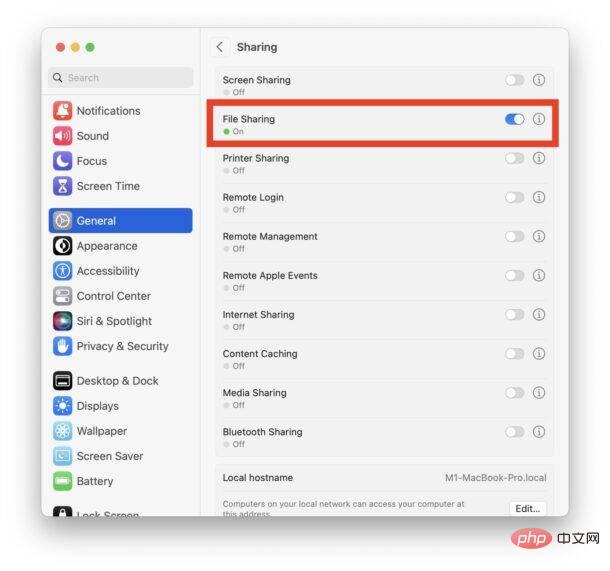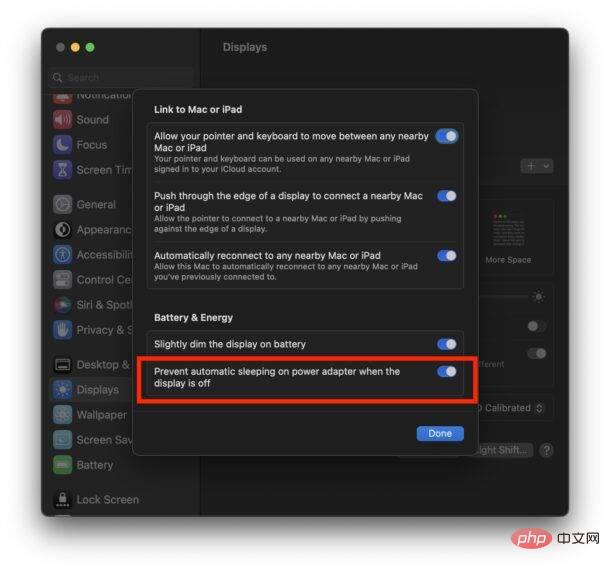1: Copy and Paste Between Mac, iPad
Copying and pasting between any connected devices is as simple as selecting the text or image you want to copy and pasting it to the target device. Super easy to use!
Just drag your cursor over the device you want to copy from, then drag it over the device you want to paste to, and then paste. That's it, it works great whether the data is text or images.
2: Drag and drop files between Mac, iPad
You can seamlessly drag files from one Mac to another in the Files app. You can even drag Mac to iPad and vice versa.
Drag files from another Mac or iPad to your Mac is easy because you can drop them to any location or folder on your desktop.

# However, dragging and dropping files to iPad requires you to be in the Files app in iPadOS, or get the images and videos in the Photos app in iPadOS.
3: Keyboard shortcuts also follow the cursor
Want to use keyboard shortcuts to open Spotlight and launch apps? No problem, keyboard shortcuts follow your cursor, so just slide your cursor over the Mac or iPad where you want to perform the keyboard shortcut and let go.
Even audio adjustments work across devices—at least in most cases, although some apps don't seem to be able to use it yet. For example, if iPad is on the Home screen but not in the Spotify app, you can slide the mouse cursor from your Mac to iPad and adjust the system volume on iPad from the Mac keyboard or Touch Bar volume controls. Presumably, these types of quirks will be ironed out over time.
4: Many Gestures Work on Mac/iPad
When you slide the cursor over to the iPad from a Mac using a trackpad, many of the gestures you may already be familiar with on the iPad also Available for Universal Control, includes three-finger swipe left or right to change apps, two-finger swipe up and down to scroll, three-finger swipe up to return to home screen, three-finger swipe up and pause for Mission Control ,etc. Give it a try!

5: Arrange display orientation as desired
It is highly recommended to use Universal Control to arrange your monitors to match your physical setup, found in Mac's Display System Preferences It's easy to do in the Settings panel. Simply click and drag the displays to arrange them to match your physical setup. An extra Mac to the right of the monitor and an iPad to the left? No problem, just drag them accordingly.

6: Quickly Disconnect the Device from the Menu Bar
You can do this by pulling down the Show menu bar item on your Mac and then selecting Disconnect on the device , easily disconnect the device from Universal Control.

Please note that devices will also automatically disconnect when they are far enough away from the main Mac, so if you are just carrying your laptop or iPad around, you don't need to Disconnect manually first.
7: Automatically reconnect devices to Universal Control
Yes, Macs and iPads will automatically reconnect to Universal Control when back in range, if that setting is enabled.
Go to Apple Menu > System Settings/Preferences > Display > Advanced/Universal Controls > Make sure "Automatically reconnect to any nearby Mac or iPad" is enabled.
Here are the Universal Control settings in macOS Ventura and newer: 
Here are the Universal Control preferences in macOS Monterey: 
This is useful if you have a primary desktop setup but often take your Mac laptop or iPad away for use on the go, as they will automatically reconnect to your desktop-based workstation when they are near again.
8: You can also use Magic Keyboard to control your Mac from your iPad
While you might think that only your primary Mac can control other devices, whether it’s another Mac or iPad, you actually can Can be turned in another direction.
For example, if your iPad has Magic Keyboard, you can slide your cursor over your Mac and use the trackpad and keyboard as expected.
9: Just Control Multiple Macs, No iPad Required
If you only have Macs in your setup, that’s totally fine—you can still use Universal Control to control them with a single keyboard and mouse Every Mac.
Suppose you have a desktop iMac with a built-in monitor as your primary desktop Mac, MacBook Pro, and MacBook Air with keyboard and mouse – you can use universal controls to seamlessly control each of these devices.
Every Mac can use this feature as long as they are running macOS Monterey 12.3 or later.
This is really cool, similar to the Synergy or Barrier apps that previously offered this feature (and still offer this feature for devices that don't support Universal Control or for users who need cross-platform support for sharing keyboard and mouse) Mac and Windows PC).
The above is the detailed content of 9 Handy Universal Control Tips for Mac and iPad. For more information, please follow other related articles on the PHP Chinese website!
 ip与mac绑定什么意思Mar 09, 2023 pm 04:44 PM
ip与mac绑定什么意思Mar 09, 2023 pm 04:44 PMip与mac绑定是指将特定的IP地址与特定的MAC地址关联起来,使得只有使用该MAC地址的设备才能够使用该IP地址进行网络通信。ip与mac绑定可以防止被绑定的主机的IP地址不被假冒,前提条件:1、MAC地址是唯一的,并且不可假冒;只能绑定与路由器直接相连的网络上的主机(也就是主机的网关在路由器上)。
 mac版下载是什么意思Mar 06, 2023 am 09:52 AM
mac版下载是什么意思Mar 06, 2023 am 09:52 AMmac版下载的意思是当软件在选择安装时,选择MAC版下载;Windows版和MAC版是两个不同的操作系统,所以大多数软件在选择安装的同时需要选择Windows版还是MAC版。
 mac鼠标滚轮相反怎么办Mar 16, 2023 pm 05:44 PM
mac鼠标滚轮相反怎么办Mar 16, 2023 pm 05:44 PMmac鼠标滚轮相反的解决办法:1、打开mac电脑,点击屏幕的苹果标志,然后选择“系统偏好设置”;2、在“系统偏好设置”窗口中,选择“鼠标”;3、在“鼠标”窗口中,将“滚动方向:自然”前面的勾去掉即可。
 修复文件共享在 MacOS Ventura 中不起作用Apr 13, 2023 am 11:34 AM
修复文件共享在 MacOS Ventura 中不起作用Apr 13, 2023 am 11:34 AM修复 SMB 文件共享在 MacOS Ventura 中不起作用的问题从 Apple 菜单打开 Mac 上的“系统设置”应用程序转到“常规”,然后转到“共享”找到“文件共享”的开关并将其关闭通过转到 Apple 菜单并选择重新启动来重新启动 Mac重新启动后,返回共享系统设置面板并将“文件共享”重新设置为打开位置像往常一样恢复文件共享,它应该按预期工作如果 MacOS Ventura Mac 与另一台 Mac 或设备之间的文件共享突然再次停止工作,您可能需要在几天后或随机重复此过程。
 如何防止 Mac 在显示器关闭时进入睡眠状态 (MacOS Ventura)Apr 13, 2023 pm 12:31 PM
如何防止 Mac 在显示器关闭时进入睡眠状态 (MacOS Ventura)Apr 13, 2023 pm 12:31 PM显示器关闭时如何防止 Mac 休眠如果您希望 Mac 显示器能够在整个计算机不进入睡眠状态的情况下关闭,请在此处进行适当的设置调整:下拉 Apple 菜单并转到“系统设置”转到“显示”点击“高级...”切换“防止显示器关闭时电源适配器自动休眠”的开关现在 Mac 显示屏可以关闭,同时防止 Mac 本身进入睡眠状态。这可能主要与 Mac 笔记本电脑用户相关,但即使是那些没有 MacBook 的用户也可能会发现该功能很有用。
 mac的shift键是哪个键Mar 13, 2023 pm 02:20 PM
mac的shift键是哪个键Mar 13, 2023 pm 02:20 PMmac的shift键是fn键上方、caps lock键下方的一个键,该键在键盘最左侧,由右下往上数第2个键;shift键是键盘中的上档转换键,可以通过“Ctrl+Shift”组合键来切换输入法。
 mac克隆是什么意思Jan 31, 2023 am 10:33 AM
mac克隆是什么意思Jan 31, 2023 am 10:33 AMmac克隆全称mac地址克隆,是固化在网卡上串行EEPROM中的物理地址,通常有48位长。mac克隆一般应用在路由器上,用户在用电脑直接拨号上网,后来又加了个路由器,通过路由器来实现多台电脑同时上网,这时要用到mac地址克隆了,就是把当前的电脑的mac地址克隆到路由器中去,因为运营商是把你的电脑mac地址绑定你的账号的,所以得克隆以后才能用。
 mac解压rar用什么软件Mar 03, 2023 pm 04:18 PM
mac解压rar用什么软件Mar 03, 2023 pm 04:18 PMmac解压rar的软件:1、The Unarchiver,是一款完全免费、小巧,而且非常易于使用的压缩、解压缩小工具;2、Keka,是一款免费、实用的压缩、解压缩工具,支持解压缩RAR格式的压缩包;3、360压缩大师,是一款免费的压缩、解压缩软件,完全支持RAR文件解压;4、MacZip,支持包括RAR在内的超过20种压缩格式的解压;5、BetterZip;6、FastZip。

Hot AI Tools

Undresser.AI Undress
AI-powered app for creating realistic nude photos

AI Clothes Remover
Online AI tool for removing clothes from photos.

Undress AI Tool
Undress images for free

Clothoff.io
AI clothes remover

AI Hentai Generator
Generate AI Hentai for free.

Hot Article

Hot Tools

VSCode Windows 64-bit Download
A free and powerful IDE editor launched by Microsoft

PhpStorm Mac version
The latest (2018.2.1) professional PHP integrated development tool

DVWA
Damn Vulnerable Web App (DVWA) is a PHP/MySQL web application that is very vulnerable. Its main goals are to be an aid for security professionals to test their skills and tools in a legal environment, to help web developers better understand the process of securing web applications, and to help teachers/students teach/learn in a classroom environment Web application security. The goal of DVWA is to practice some of the most common web vulnerabilities through a simple and straightforward interface, with varying degrees of difficulty. Please note that this software

Zend Studio 13.0.1
Powerful PHP integrated development environment

EditPlus Chinese cracked version
Small size, syntax highlighting, does not support code prompt function







